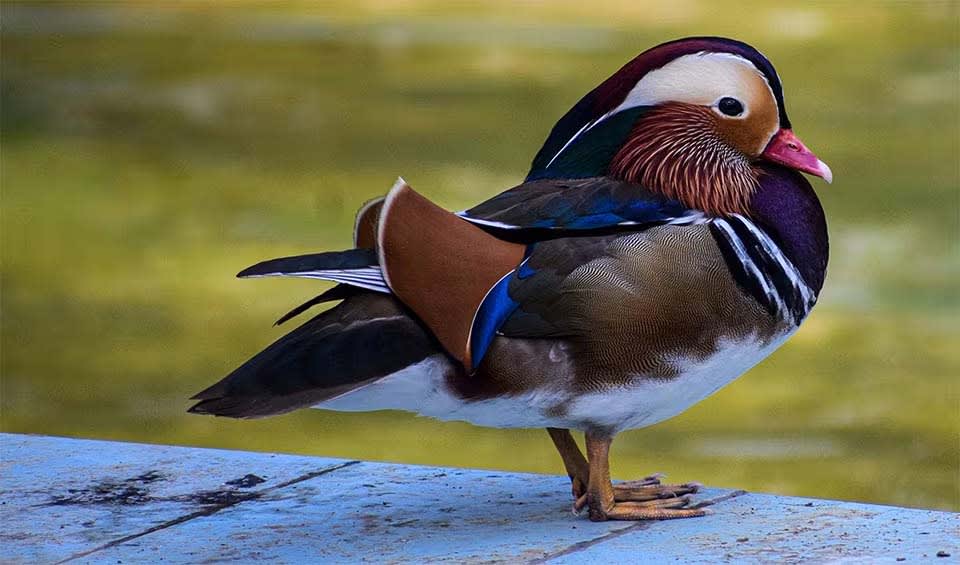In the world of waterfowl, the Mandarin duck stands out as a stunning spectacle of color and elegance. Native to East Asia but found in park ponds across continents due to their popularity in aviaries, these ducks are celebrated for their extraordinary plumage and graceful presence.
The male Mandarin duck is particularly noted for its striking appearance during the breeding season. Its vibrant feathers boast a mesmerizing array of colors: rich ambers, dazzling blues, and stark contrasts of black and white, complemented by striking orange “sails” on their back. While more subdued in color, the female maintains a graceful elegance with her soft, mottled brown feathers, ensuring camouflage during the nesting period.
Mandarin ducks prefer the tranquil and sheltered environments of dense, shrubby forested edges of rivers and lakes. They are adept at tree climbing and often choose tree cavities or artificial nest boxes for breeding. What is particularly fascinating about them is their mating behavior. Unlike many other duck species, Mandarins are largely monogamous, often forming bonds that last multiple breeding seasons. During courtship, the male performs elaborate and intricate displays to attract a mate, including mock preening, shaking, and bill dipping.
In addition to their ecological role, Mandarin ducks hold substantial cultural significance, especially in Asian art and mythology. Often seen as symbols of fidelity and affection, they are frequently featured in weddings and art as emblems of conjugal affection and fidelity.
Distribution
 Austria
Austria Belarus
Belarus Belgium
Belgium China
China Denmark
Denmark France
France Germany
Germany Hong Kong
Hong Kong India
India Japan
Japan Korea
Korea Mongolia
Mongolia Myanmar
Myanmar Nepal
Nepal Netherlands
Netherlands North Korea
North Korea Russia
Russia Slovenia
Slovenia Spain
Spain Switzerland
Switzerland Taiwan
Taiwan Thailand
Thailand United Kingdom
United Kingdom Vietnam
VietnamAnything we've missed?
Help us improve this page by suggesting edits. Glory never dies!
Suggest an editGet to know me
Terrestrial / Aquatic
Altricial / Precocial
Polygamous / Monogamous
Dimorphic (size) / Monomorphic
Active: Diurnal / Nocturnal
Social behavior: Solitary / Pack / Herd / Flock
Diet: Carnivore / Herbivore / Omnivore / Piscivorous / Insectivore
Migratory: Yes / No
Domesticated: Yes / No
Dangerous: Yes / No




